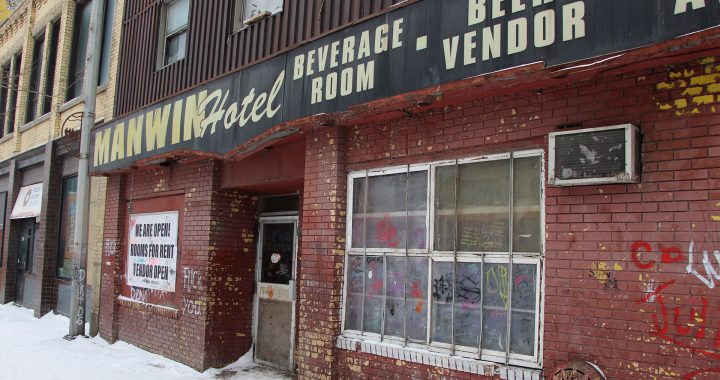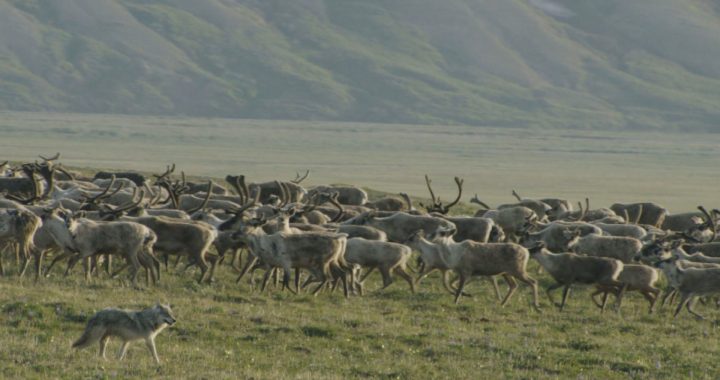
Debris is cleaned up in the forest near the Penticton Indian Band in southern B.C. Photo: APTN file
British Columbia’s forest sector has “never been under greater stress,” Premier David Eby says.
There is an “inescapable recognition that change is needed to ensure our forest industry is sustainable,” he writes in his mandate letter for the new forests minister, Bruce Ralston.
Eby’s letter to the minister of water, land and resource stewardship, Nathan Cullen, meanwhile, says “short-term thinking” in land management has led to “exhausted forests.”
The new premier’s pointed language to his ministers highlights how British Columbia’s forests sector is in the throes of change, as the province embarks on plans to “modernize” how forests are managed amid ecological concerns, fluctuating lumber prices and dwindling supply of trees for harvesting.
Bob Simpson, who served as mayor of Quesnel, B.C., a longtime forestry community, between 2014 and 2022, said the province’s forest sector is “stuck in a time warp,” carrying on with clear-cutting and exporting raw logs and lumber at a pace ecosystems and the timber supply cannot maintain.
Overhaul
Climate change, meanwhile, “robs us of time” to overhaul how forests are managed to protect their health and biodiversity while also transforming the industry, he said.
“We just don’t have the time to dither anymore. We have to be much more deliberate, we have to be much more courageous and we have to be much more collaborative than we’ve ever been,” said Simpson, who served from 2005 to 2013 as the NDP and then independent member of the B.C. legislature for Cariboo North.
The premier’s letter to Ralston describes the loss of swaths of forests to severe wildfires and beetle outbreaks, both of which have been linked to climate change.
Eby asserts the need for change is driven by those losses along with “inadequate land-use planning and replanting efforts by previous governments, unfair softwood lumber tariffs in the United States, and the unchecked export of raw logs.”
B.C. passed amendments to modernize forestry legislation last year, including laying the groundwork for a new system of 10-year forest landscape plans to be developed in partnership with First Nations with input from local stakeholders.
Existing system
The forests minister at the time, Katrine Conroy, said the plans would prioritize forest health, replacing the existing system of plans developed largely by industry.
Conroy, who is now the finance minister, said past policies left too much control of forest operations in the hands of the private sector. The changes would put government, together with First Nations, “back in the driver’s seat,” she said.
B.C. has also committed to increasing the tenure or harvesting rights held by First Nations and local communities, while Eby’s letter asks Ralston to prioritize the shift from a “high-volume to high-value” forests sector, aiming to export fewer raw logs in favour of locally manufactured wood products.
Ben Parfitt, a resource policy analyst with the B.C. office of the Canadian Centre for Policy Alternatives, said signals of what he called the “coming crash” of logging as it exists today can be found within B.C.’s records of harvest volumes and stumpage fees, or payments from logging operations on public land.
The fees fluctuate with lumber markets and vary based on tree species and quality.
Stumpage fees
The province reported more than $1.8 billion in stumpage fees in 2021, cashing in as lumber process skyrocketed with the COVID-19 pandemic. That uniquely large amount was generated from the harvest of about 58.2 million cubic metres of timber, said Parfitt, citing data from the government’s harvest billing system.
The second-highest revenue over the last 15 years was recorded in 2018, when B.C. collected more than $1.2 billion on the harvest of70.7 billion cubic metres.
Parfitt said the disparity in the revenue-to-harvest ratio prompted the question: why wasn’t harvest volume higher last year, given the potential for profit?
“If the timber was there for the industry to cut in 2021 they would have cut it, and they couldn’t, because their supply is constrained,” Parfitt said.
Lumber prices have since fallen from pandemic highs, and estimates in B.C.’s last budget forecast further declines, along with lower harvests from Crown land over the next several years.
Forest companies
The significant investments major forest companies including Canfor, Interfor and West Fraser have made in the United States in recent years, while curtailing operations at mills in B.C., are also “signs of the coming trouble,” Parfitt added.
Parfitt called it “disingenuous” to blame B.C.’s process to defer logging in irreplaceable old-growth forests, given the context of decades’ worth of industrial logging with high annual allowable cut rates, which are set by the province.
Simpson shares that sentiment.
“This idea that if we didn’t have old-growth (deferrals) to deal with, we’d have sawlog, or we didn’t have biodiversity to deal with, we’d have sawlog, it’s bogus. It’s magical thinking. It’s just not true,” he said, referring to logs suitable for lumber.
Built on the banks of the Fraser River in the central Interior, Simpson’s home of Quesnel has “long been one of B.C.’s most forest-dependent communities,” he said.
Shifts in industry
It’s both a case study and a potential proving ground for shifts in the industry.
The forests surrounding Quesnel were hit hard by beetle infestations in the mid-2000s, he said, and the government at the time responded by setting higher allowable cuts to prevent the spread and salvage value from the timber.
Sawmills expanded to process the beetle-stricken wood, masking the “corporate consolidation” happening in the industry as some companies swallowed others, ultimately reducing the number of jobs per cubic metre of wood, said Simpson.
Today, there’s not enough fibre to sustainably feed those mills, said Simpson, a member of a new council appointed to advise the B.C. government on how to support workers and communities affected by changes in the forests industry.
Adding to the pressures on the forest, a massive wildfire scorched more than 5,000 square kilometreswest of Quesnel in 2017, leaving what Simpson described as a “blown out” landscape that requires a “very significant forest health strategy.”
Pilot projects
The Quesnel timber supply area is the focus of one of four pilot projects underway to shape the B.C. government’s new framework for 10-year forest landscape plans.
Simpson said West Fraser is now the only major forestry company operating in Quesnel when there used to be several. The loss of industrial property tax revenues can be a “big hit” for a municipality when a company shuts its doors, he added.
The province is “loath” to backstop the loss of that revenue, Simpson said, so it will have to provide targeted and specific supports depending on the community.
B.C.’s latest budget earmarked $185 million over three years to support the industry, its workers and First Nations affected by shifts in the sector.
While the community faces uncertainty, Simpson said Quesnel could also be a proving ground for innovation that would create more value and jobs in the industry while reducing pressure on forests and the timber supply at the same time.
To collapse
“We have to see a lower conifer sawlog profile coming to our communities over time,” he said. “But that doesn’t mean the industry has to collapse.”
There is a medium-density fibreboard or MDF facility in Quesnel, for example. It uses waste material from sawmills to create panels, which are shipped to California for further manufacturing into products such as door trim, Simpson said.
“So we’ve said, ‘Why don’t you have a program where you work with industry to provide the various incentives they need, so we get an MDF remanufacturing facility here in Quesnel?’ Not one more sawlog is needed for that.”
A pilot project is also underway using a pulp mill byproduct as a substitute for bitumen in asphalt, another way to add value to the sector, Simpson said.
The B.C. government has long toyed with “value over volume” as a strategy to sustain the industry, but it’s time to “get serious,” he said.
Five companies
Just five companies hold about half the tenure throughout B.C. and they primarily produce raw logs, lumber and pulp. Those companies answer to their boards of directors and shareholders, who are often hesitant when it comes to significant operational shifts that could be seen as risky, said Simpson, who also worked as a change management leader within a forest products company for a decade.
“We, as a province, have to equip the people in the industry who share the vision of changing forestry here with the kinds of tools they need to be able to convince boards to give them the licence to be innovative,” he said.
“I think that deep shift that industry knows it must go through is often masked by the language they use, which is still certainty and cost,” he added.
The Canadian Press requested an interview with a representative of the Council of Forest Industries, but no one was available.










